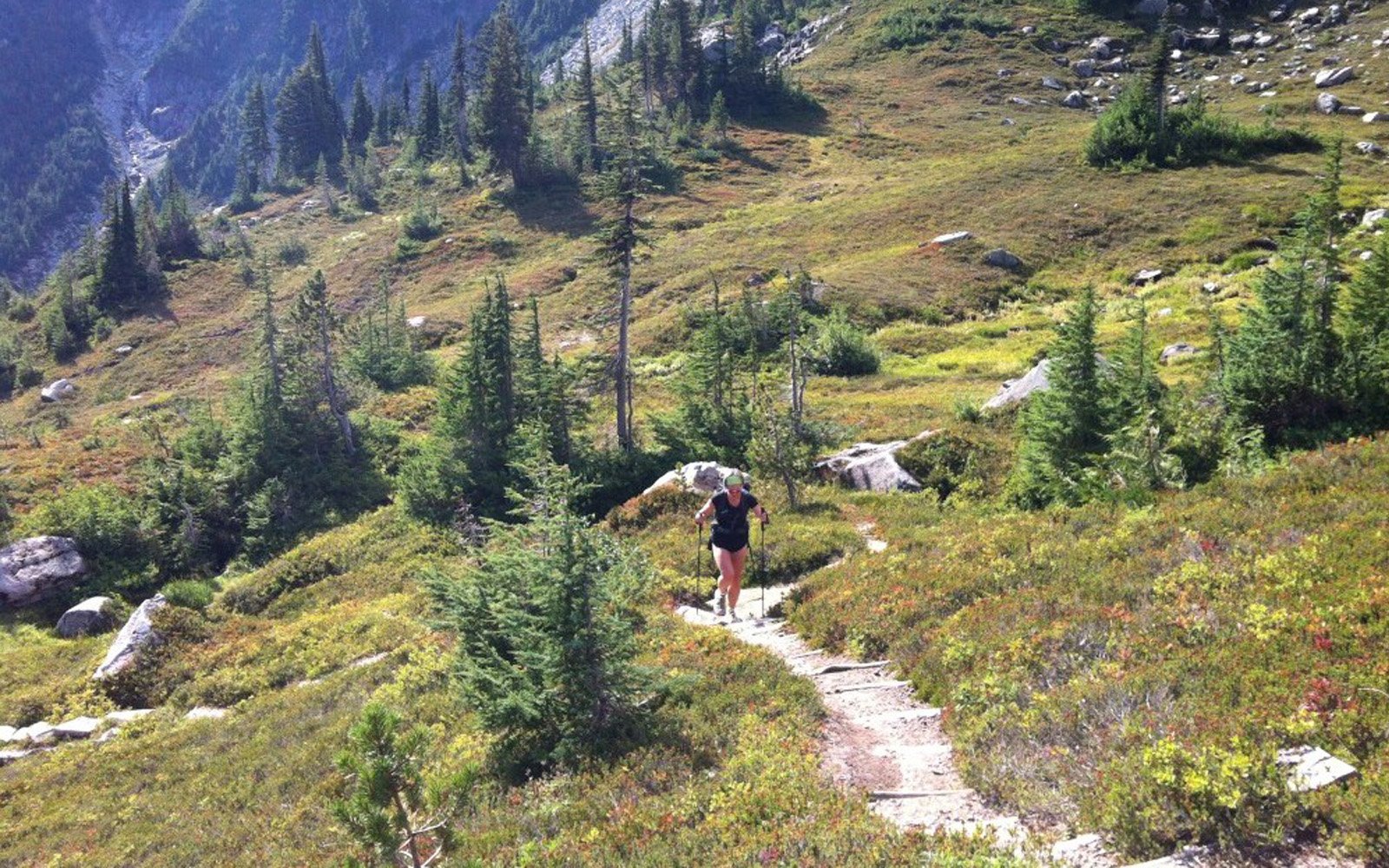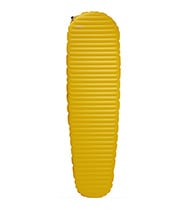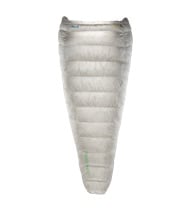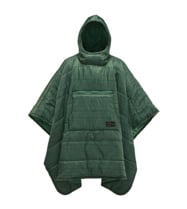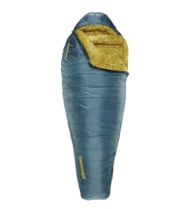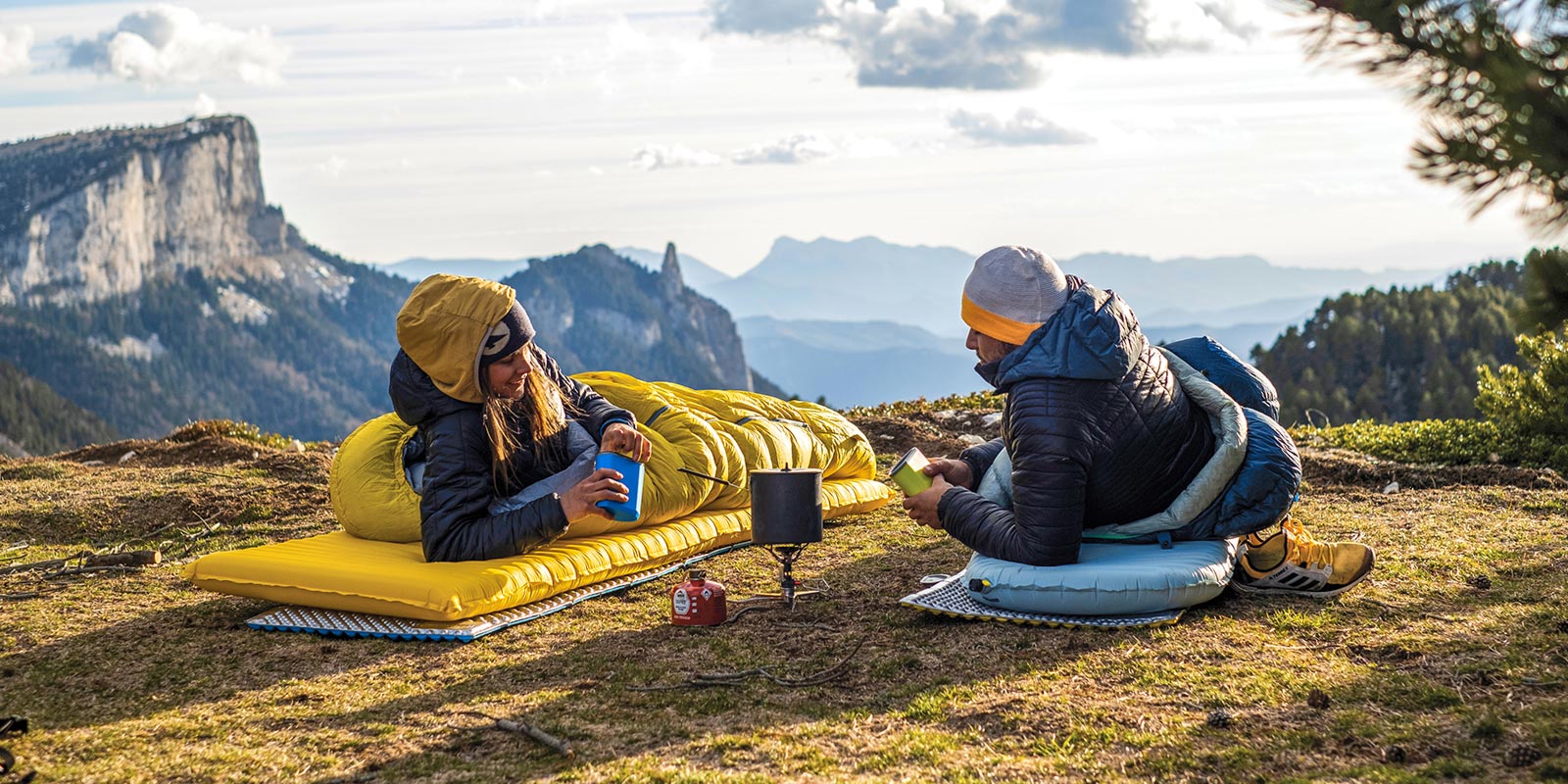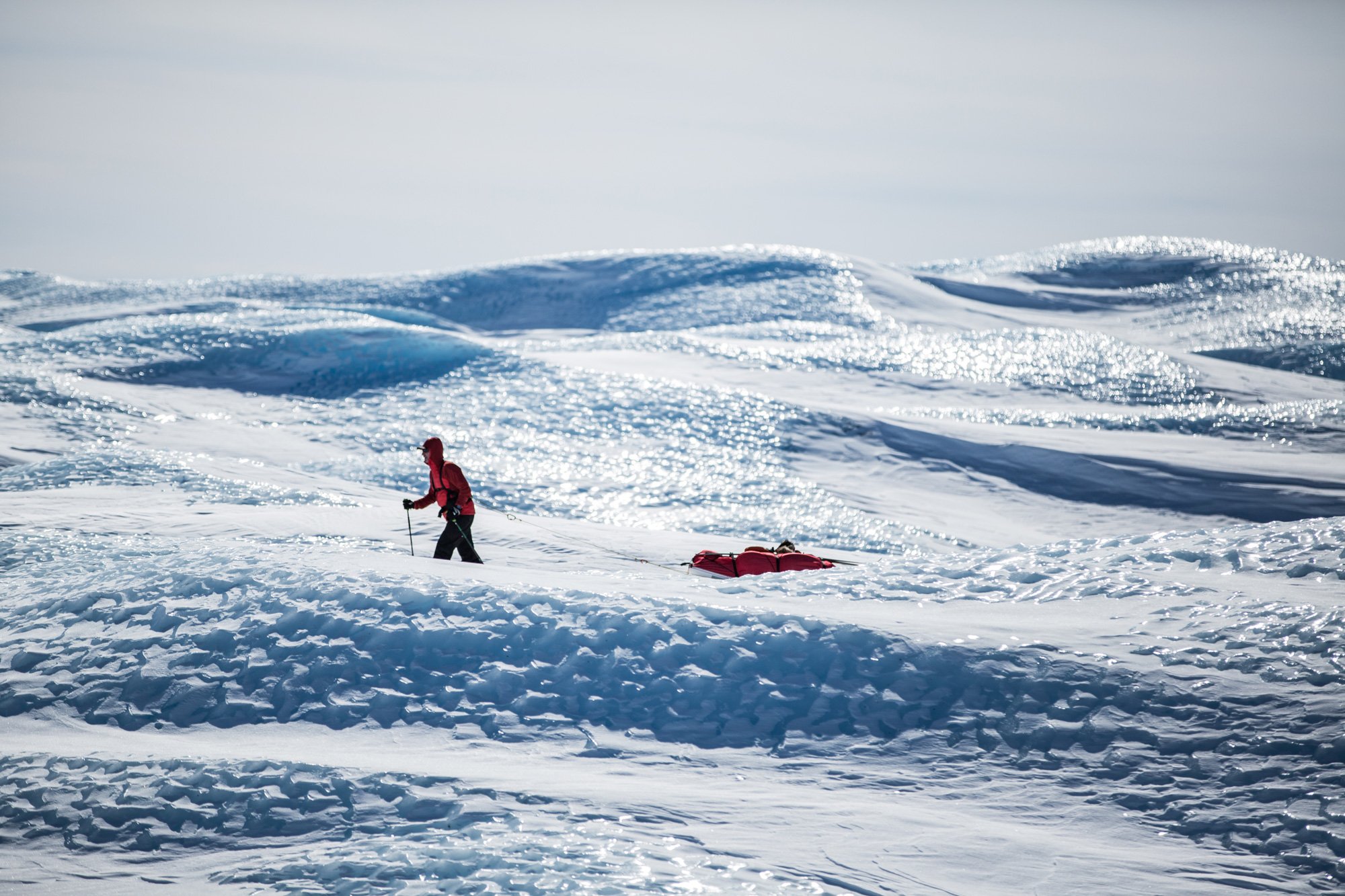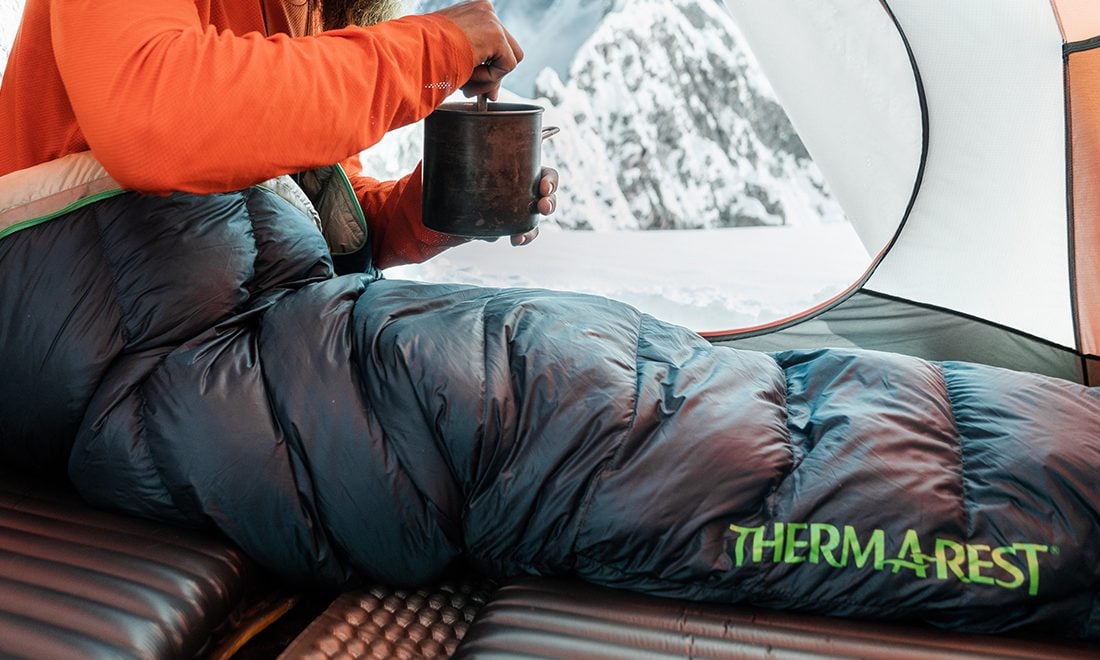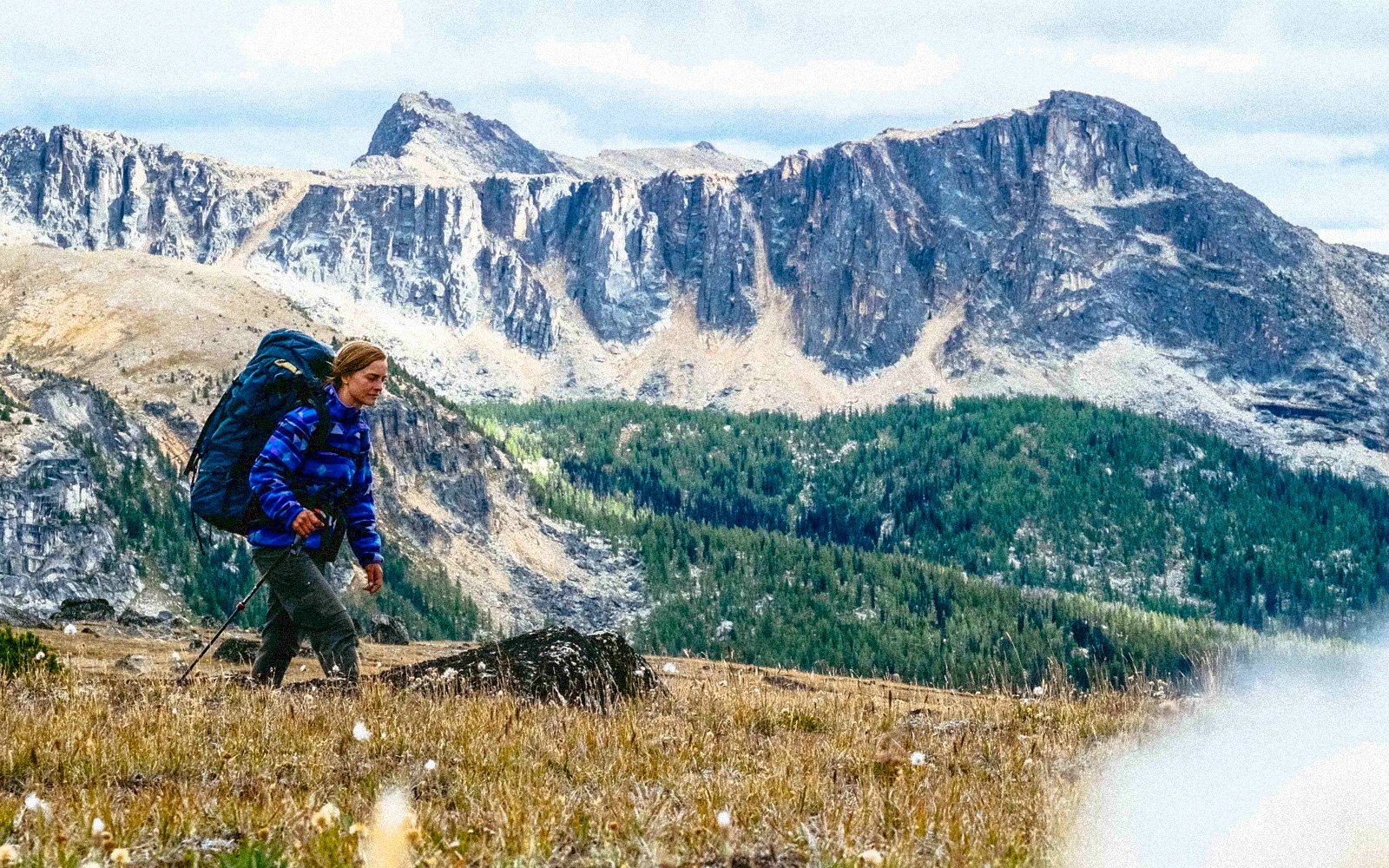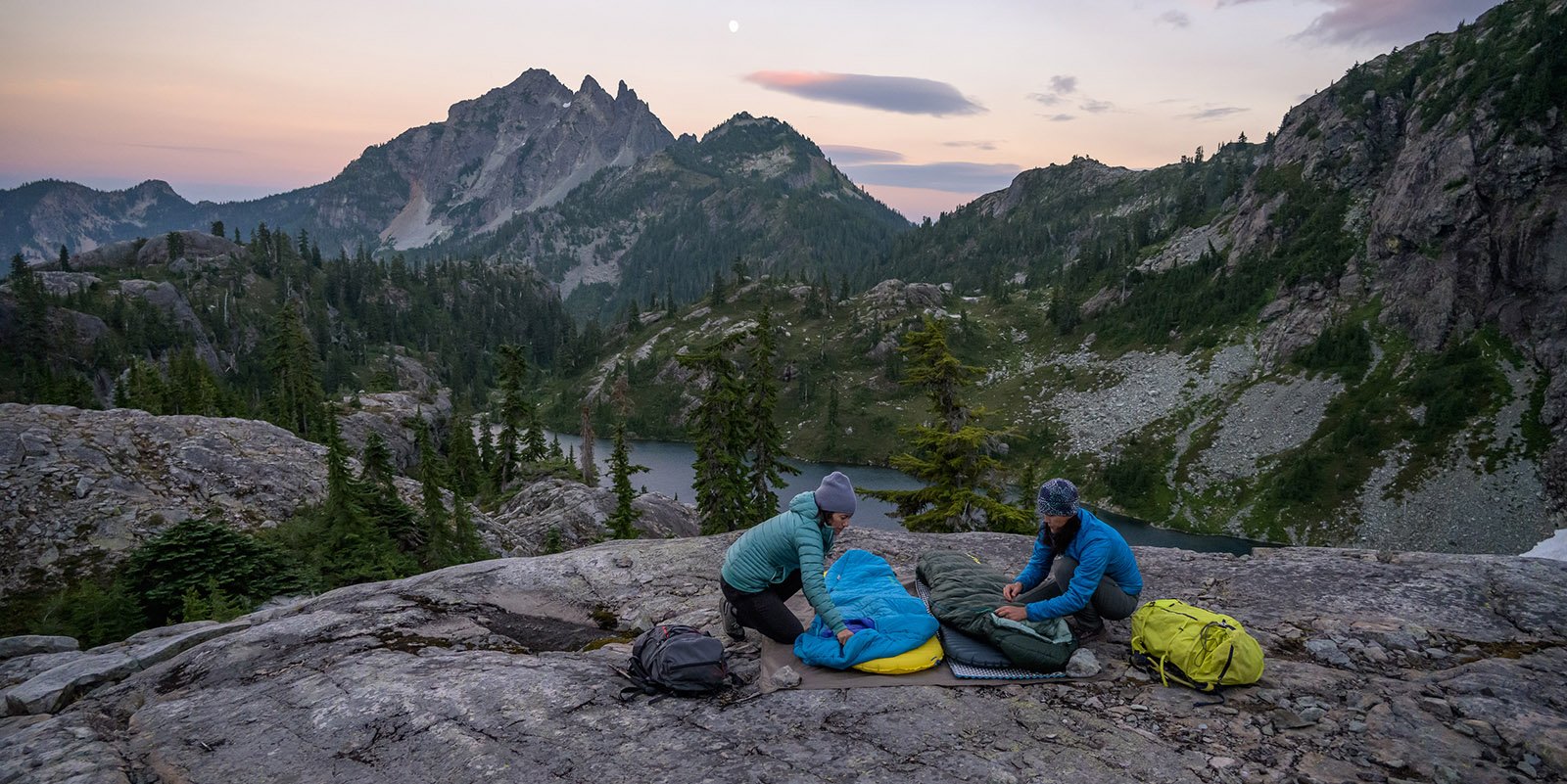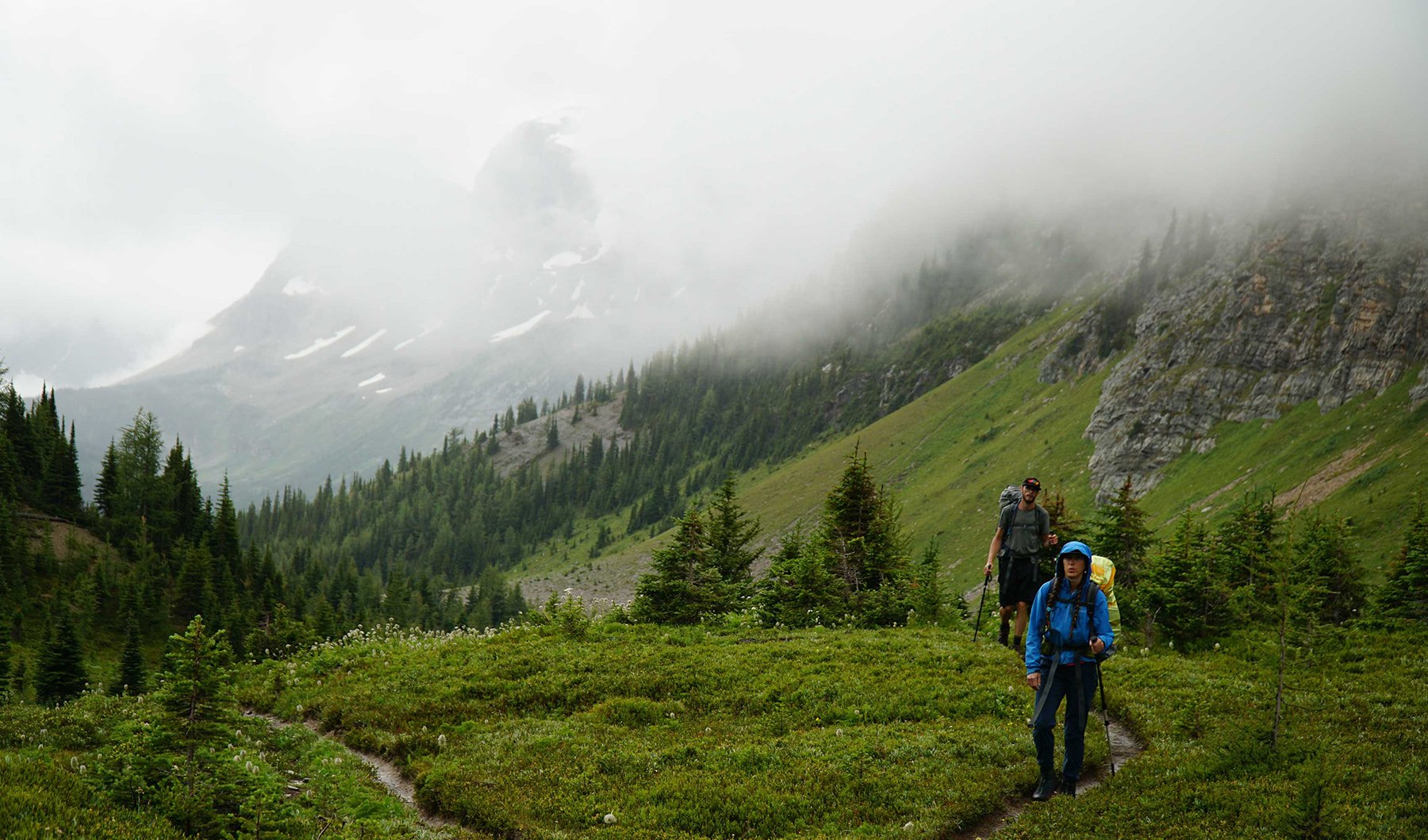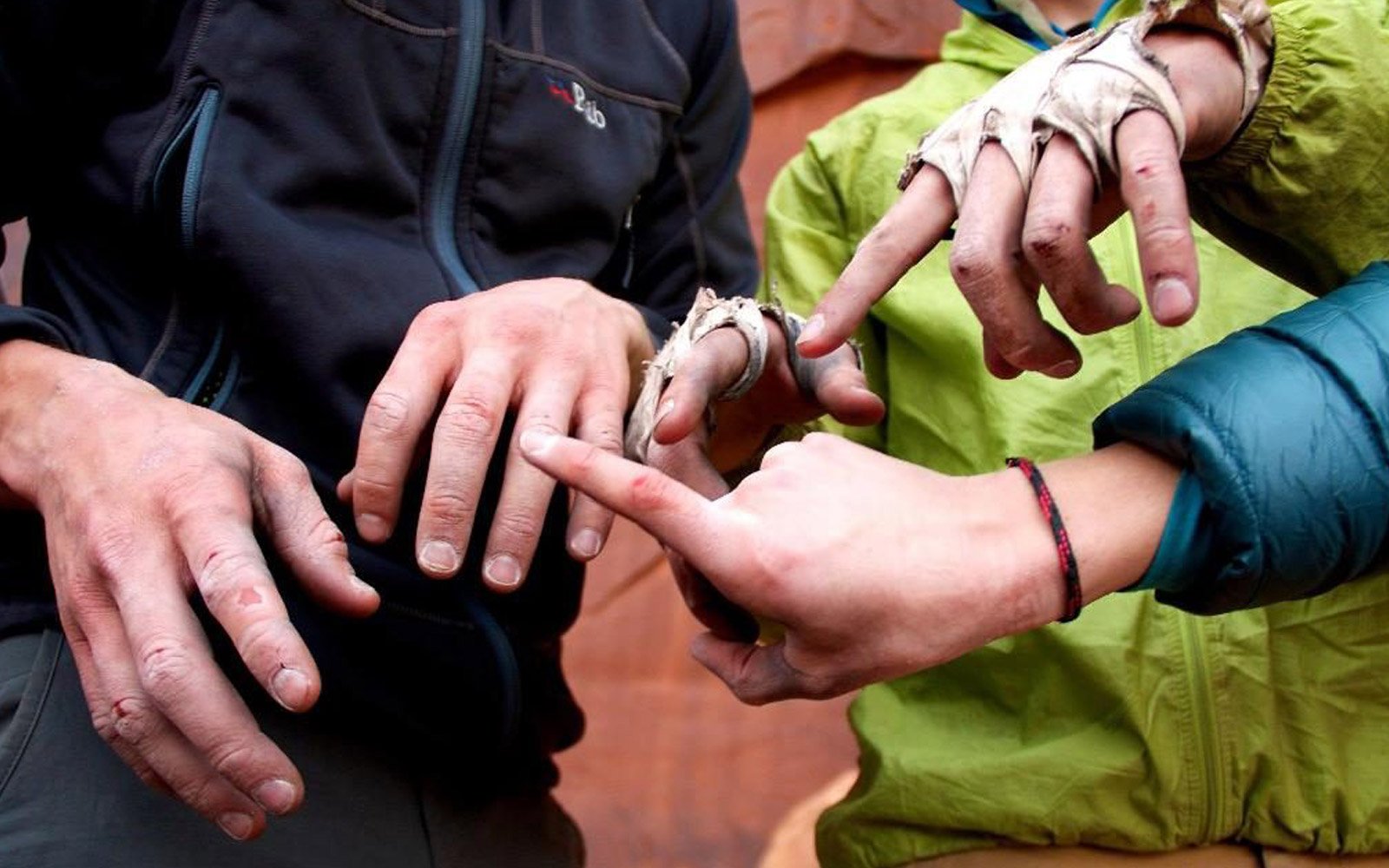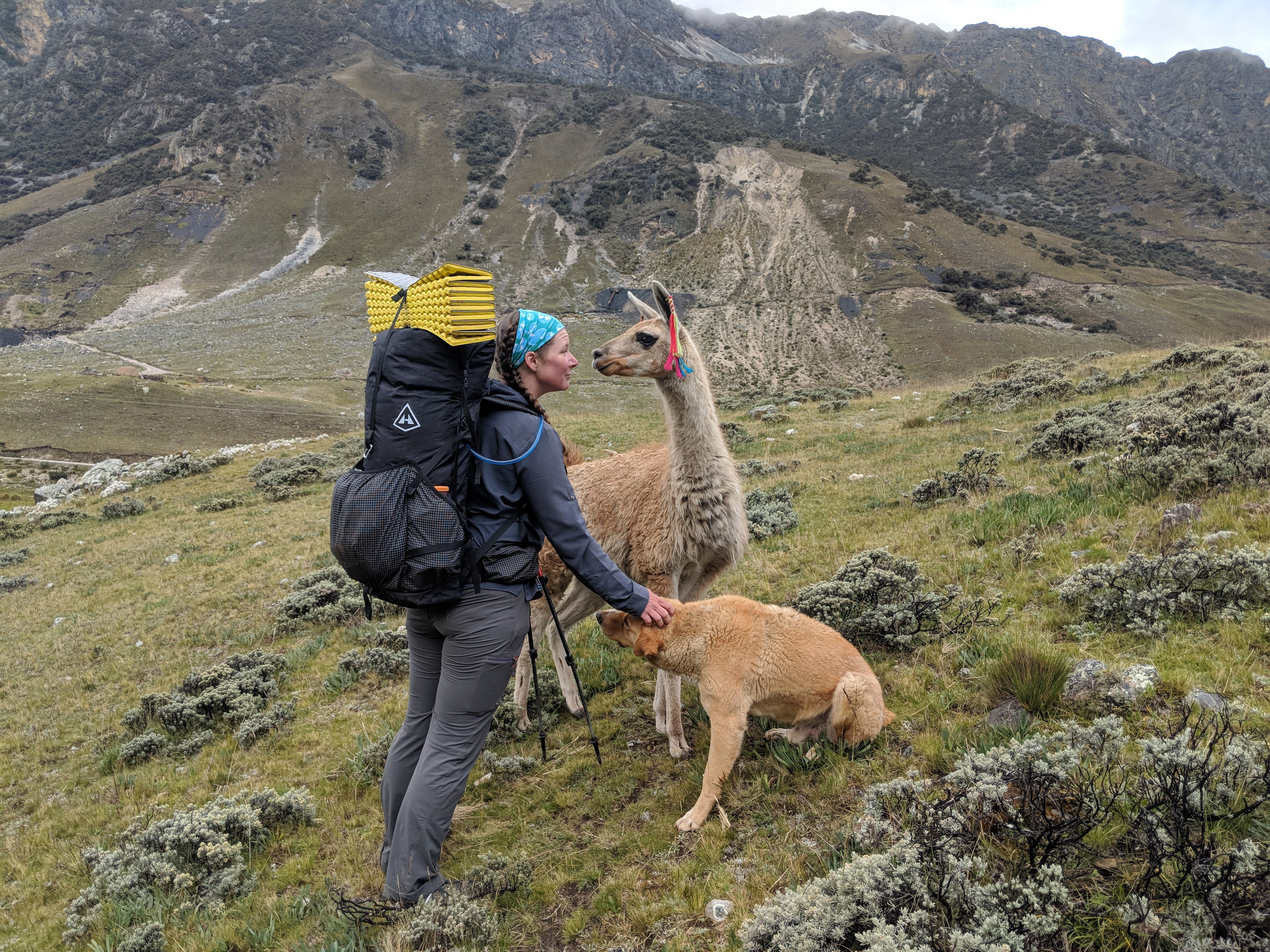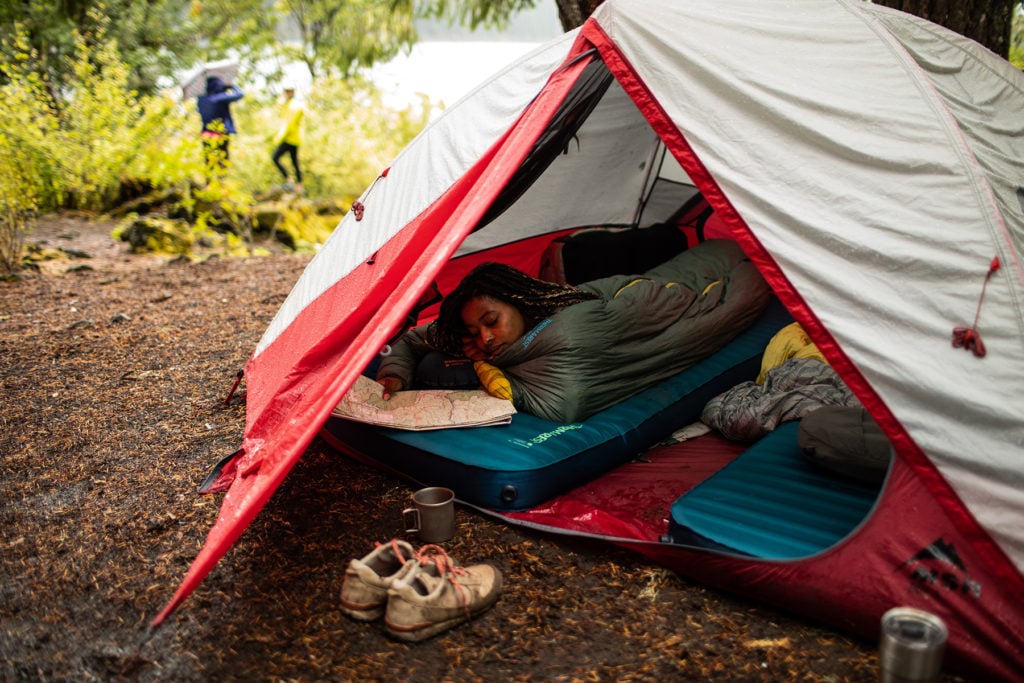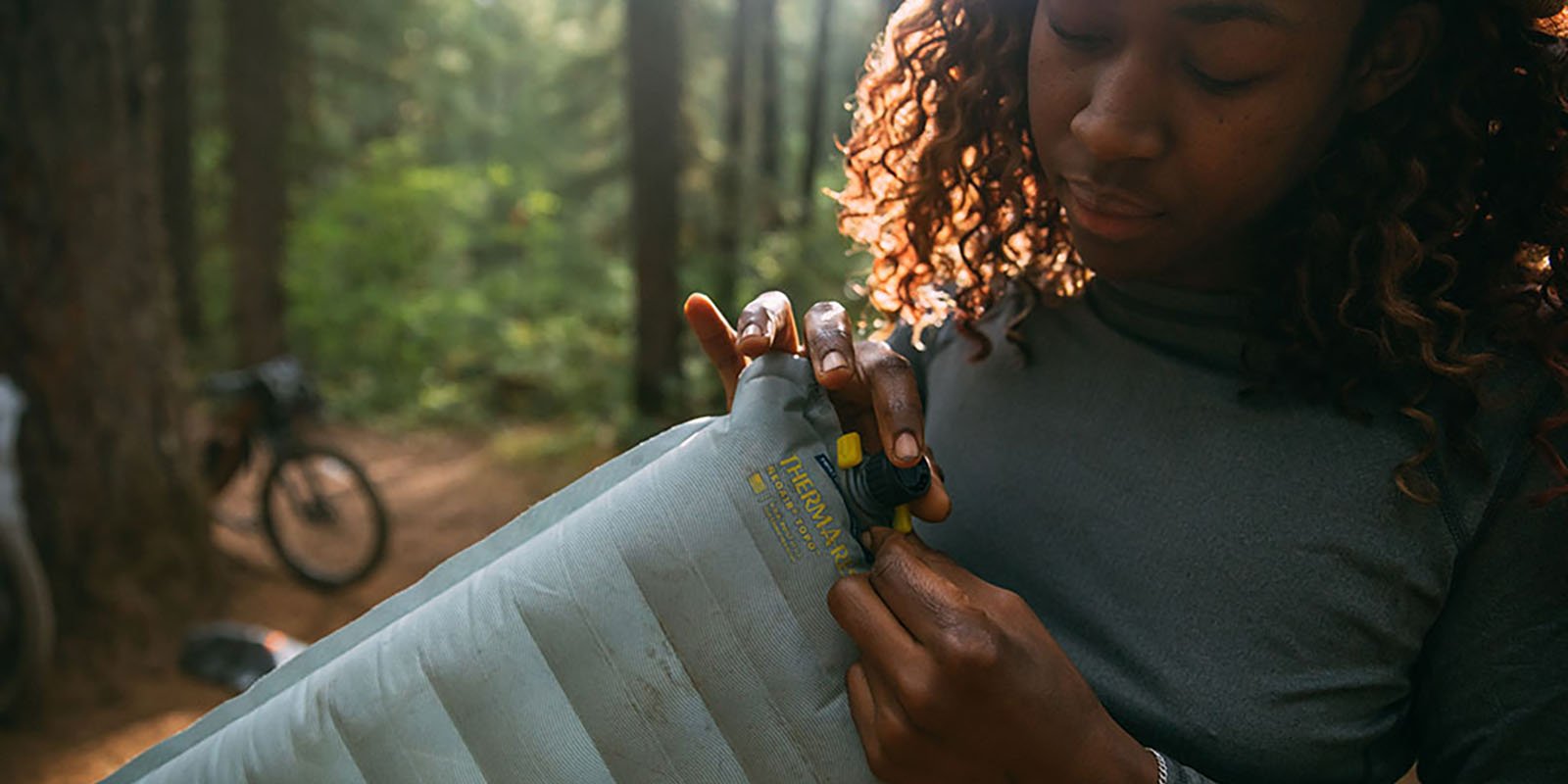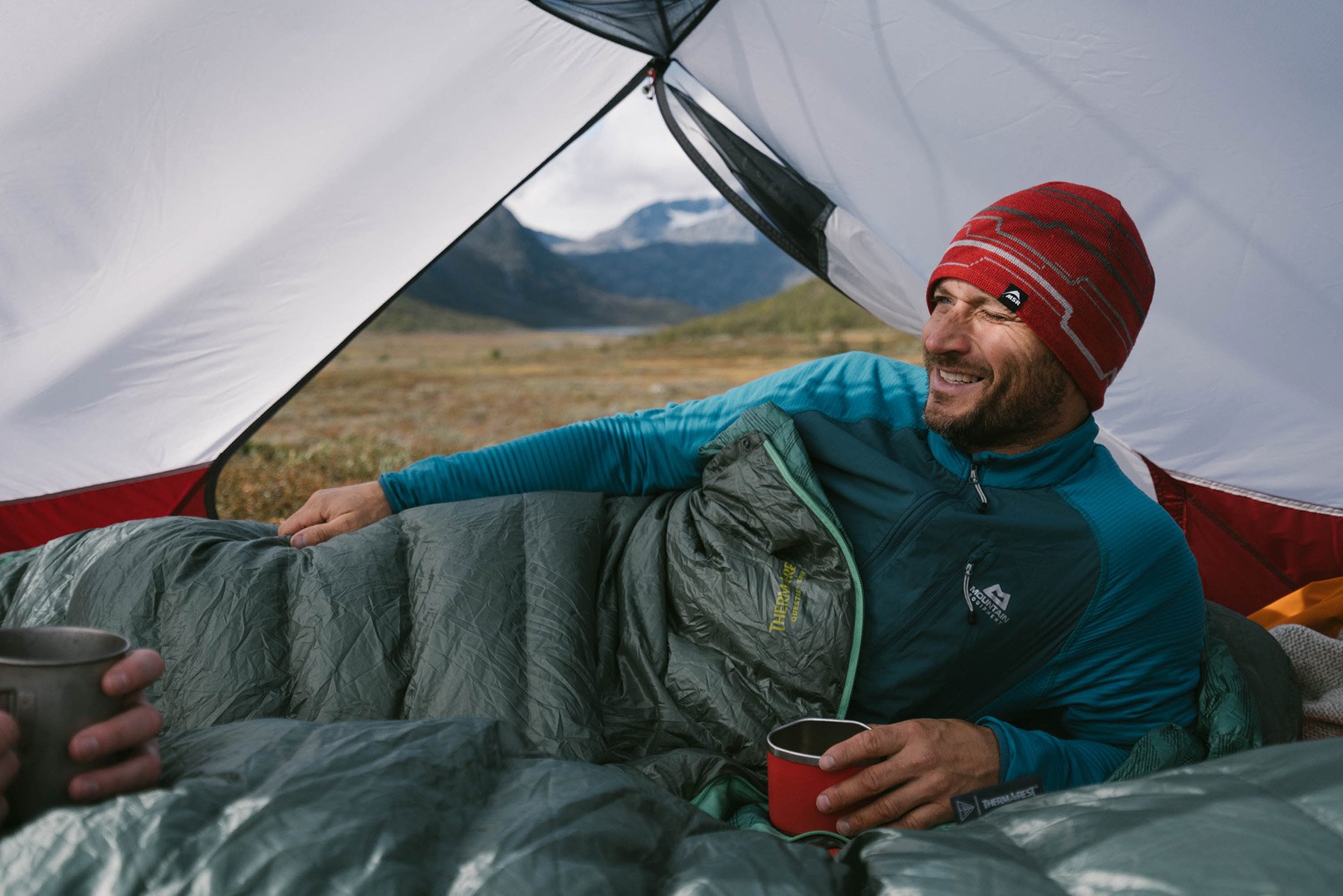A great fall camping trip is similar to the perfect date. You set off in a state of anxious uncertainty, wondering if the weather will hold, or if you’ll be warm enough, only to forget about those details once the magic of being in the moment takes you for a ride. And when you look back in life’s rearview, the one thing you do remember is how much flippin’ fun you had, and that you can’t wait to do it again.
So with the thought that yesterday’s memory is tomorrow’s adventure, we’ve shared a few of our favorite fall camping trips to inspire your next night outdoors.
Goldmyer Hot Springs—Central Cascade Mountains, WA.
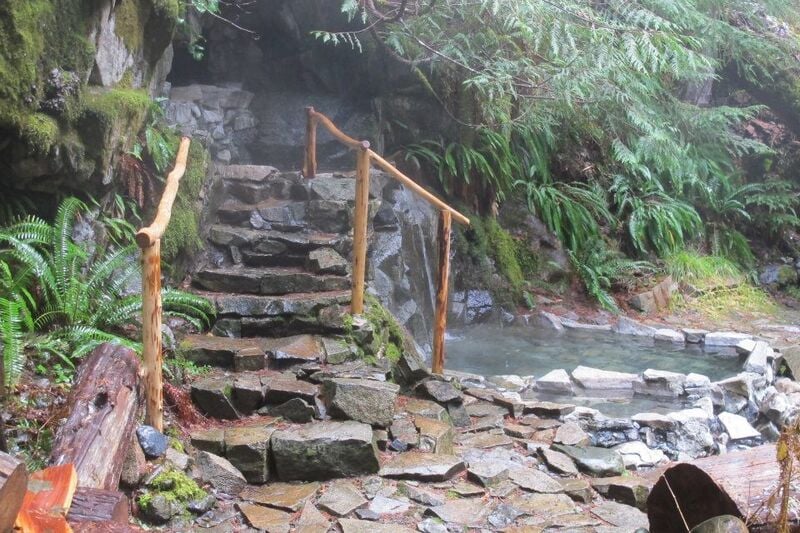
Goldmyer Hot springs is a favorite cold weather camping trip. After a drive up the North Fork of the Snoqualmie River, it’s a brief 4.5 mile walk (or MTB ride) on an old dirt road to the springs. Literally pouring out from caves, Goldmyer is a real treat for Puget Sound locals. Despite the relatively easy access, it has a wild and remote feeling and the hot springs are beyond classic. As you might imagine (and appreciate), reservations are required through the nonprofit that maintains it year-round. Clothing is optional, and you always meet interesting people. And don’t forget your Honcho Poncho – a truly indispensable piece of kit for any hot spring!
Mount Rainier—Northern Loop Trail, WA.
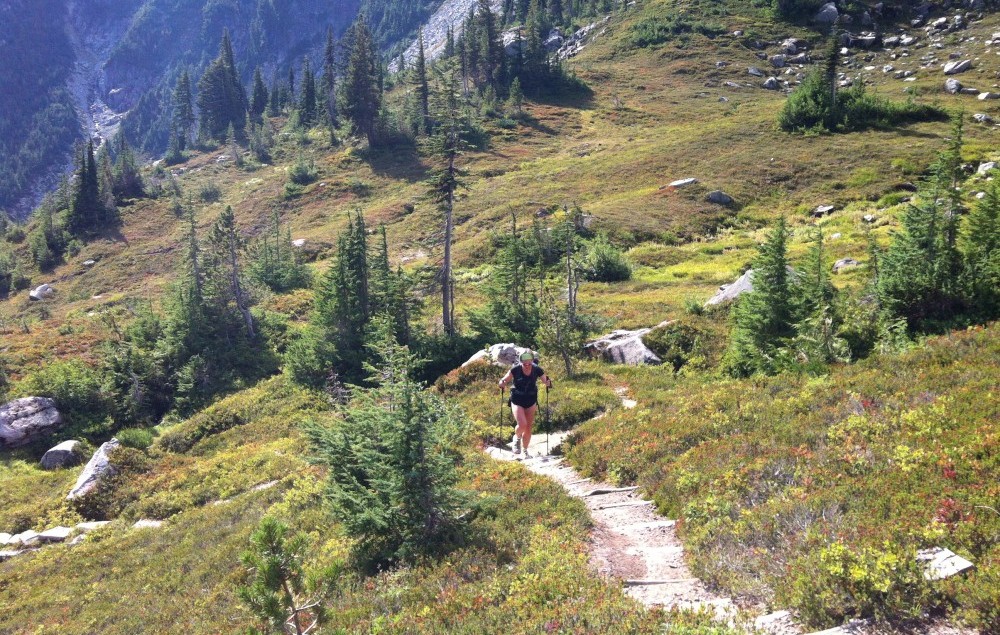
While “The Mountain” deservedly draws most of the attention in Mount Rainier National Park, the area around its base is a gorgeous and often overlooked wilderness playground to enjoy. The immensely popular Wonderland Trail circumnavigates Mount Rainier, but it’s 100+mi length is not exactly easy as an unsupported backpack for mere mortals and scoring a permit is about as hard as getting one for the summit.
The North Loop is a 36-ish mile trip that mixes some of the classic Wonderland terrain with a much less-visited area of the park. It traverses from Sunrise to the Carbon River under Rainier’s mighty north face on the Wonderland trail, but then cuts back to the northeast through less visited and highly varied terrain, from high alpine awash with fall colors, to glacier-carved river valleys with only hints of fall in the air. As with most Cascade backpacks, there’s a lot of vertical to cover, but with just under 40 miles to cover, the North Loop makes a great 4–5-day backpack for just about anyone seeking some solitude in an otherwise busy national park. For this one, you’ll appreciate an ultralight sleeping kit, like a NeoAir® XLite® NXT and a Vesper Quilt to ride that line between light incredible comfort.
South Utah Desert
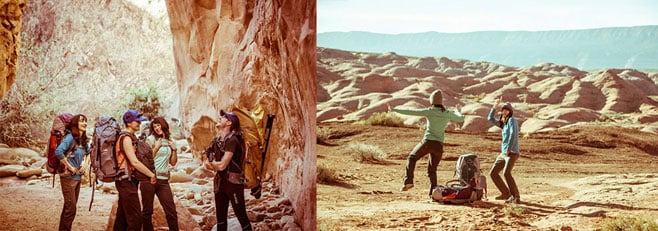
November in Seattle is the definition of purgatory. It’s snowy in the hills, but typically too soon to ski, and all that snow is falling as cold rain here in town, making it miserable to do much of anything.
This (and spring) is the time of year that the red rock desert of Utah calls the loudest. Believe it or not, you can hit the edges of it in roughly 16-hour drive from Seattle, and a short flight can drop you in Las Vegas, Salt Lake City, Grand Junction, CO, or a host of other access points to get you basking in the warm sun in no time at all.
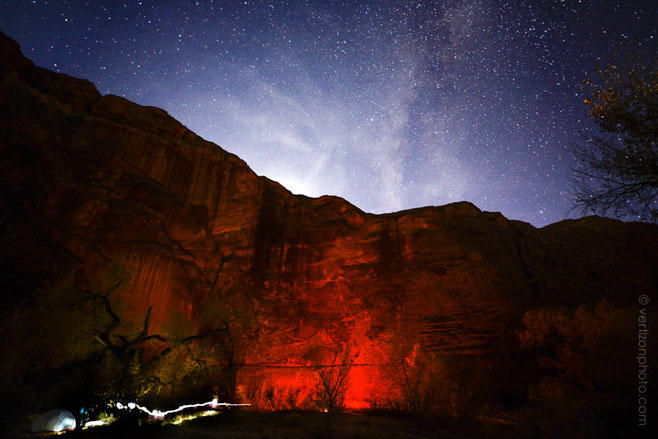
One of our favorite itineraries is flying into Las Vegas (because, VEGAS!), then grabbing a car and head northeast to Zion and Bryce National Parks. If disappearing is your thing, drive a little farther and head into the immense and stunning Grand Staircase Escalante National Monument. Here you can descend into legendary slot canyons, or just get lost and explore for as many days as you can manage to be away from reality. Crowds in November are not a thing in all but the most popular spots, even though they probably should be. (Shhhh!)
Of course, like any of the aforementioned locations, fall weather is fickle, but the desert can swing to the extremes, doling out a snowstorm and 65-degree sun in quick succession, so be prepared for both with a lightweight summer bag and a quilt to toss on if weather moves in. You’ll get the bonus utility of the quilt for starwatching, atop red rock domes in the middle of nowhere.
Olympic Coast, WA – Ozette Triangle
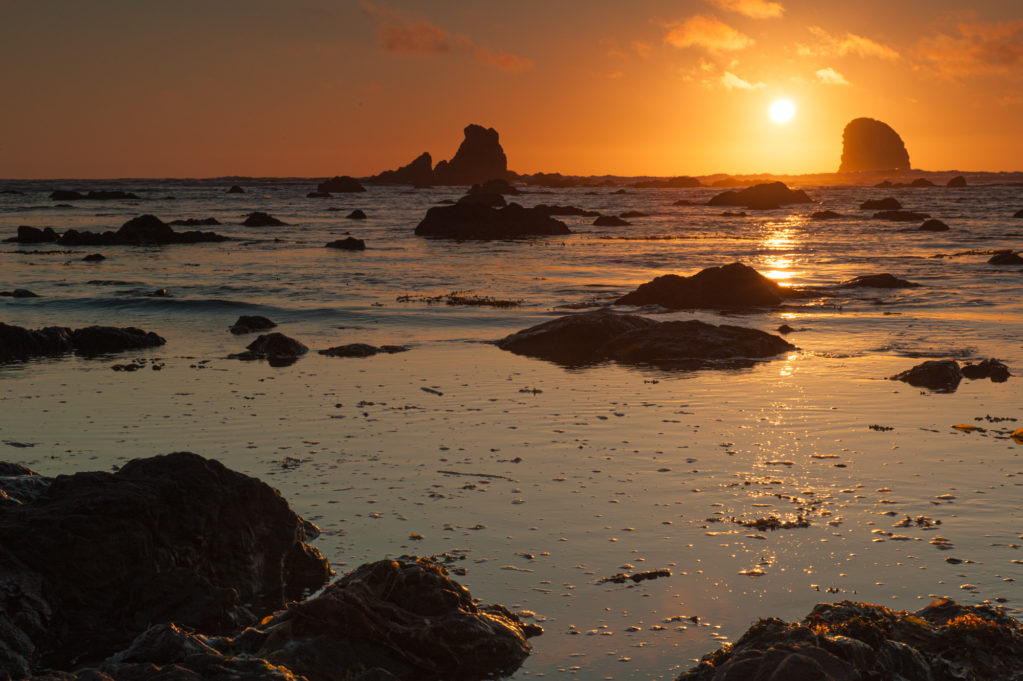 Maybe it’s a Seattle thing that makes us so tolerant of the rain, or maybe it’s just the fact that you can actually backpack the coast this time of year without the headache of the summer throngs from all over the world competing for limited permits. Whatever it is, the wild Olympic coast is awesome in the fall.
Maybe it’s a Seattle thing that makes us so tolerant of the rain, or maybe it’s just the fact that you can actually backpack the coast this time of year without the headache of the summer throngs from all over the world competing for limited permits. Whatever it is, the wild Olympic coast is awesome in the fall.
Even something as normally crowded as the Ozette Triangle (a.k.a The Cape Alava Loop) – can become a fun and easy trip in November. It can also be a raging hell of high wind and driving rains, but that should sound exciting to you if you’re considering such a thing. We’ve had everything from t-shirt beach weather to eerily powerful storms–sometimes on the same trip– and both are awesome in their own special way.
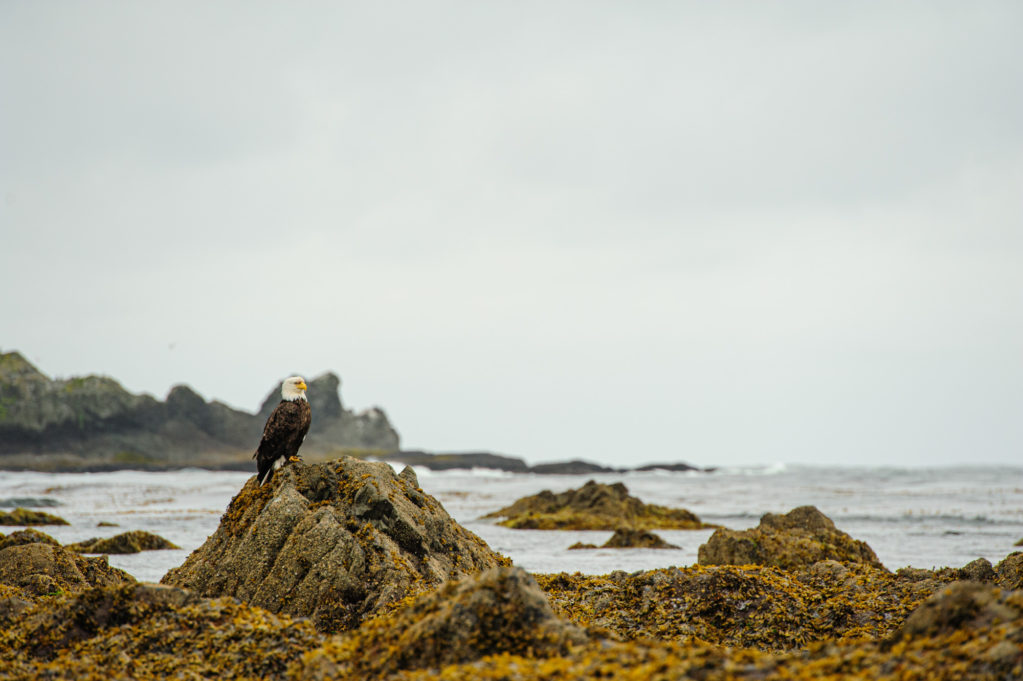 Three short legs of three miles with nearly zero elevation gain make this a fun one for a small group that loves to overpack for comfort. Bring a party tarp and extra layers for bad weather, along with luxurious food and libations and you’ll be all set for a grand time in any conditions. You’ll enjoy endless tidepools to explore, sea stacks and that awesome, calming feeling of peering out into an endless, roaring ocean.
Three short legs of three miles with nearly zero elevation gain make this a fun one for a small group that loves to overpack for comfort. Bring a party tarp and extra layers for bad weather, along with luxurious food and libations and you’ll be all set for a grand time in any conditions. You’ll enjoy endless tidepools to explore, sea stacks and that awesome, calming feeling of peering out into an endless, roaring ocean.
Pro Tip: Bring waterproof deck/dock boots and, if you plan to be out for more than a night or two in bad weather, we’d seriously recommend trying out a synthetic sleeping bag like the Saros to get you though. It will retain for more warmth than a down bag should it get wet, letting you worry less about all the water around you!
Related Posts:
- 5 Best Stargazing Destinations in the US
- The Best Dog Friendly National Parks
- 7 Best Wildflower Trails and Spring Hikes in the US
Updated. Originally Published November 12, 2015.
